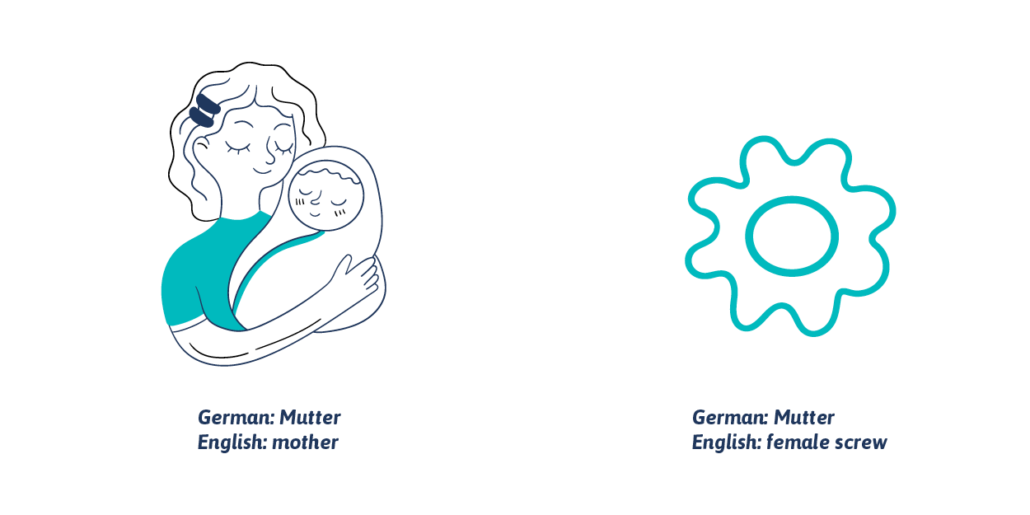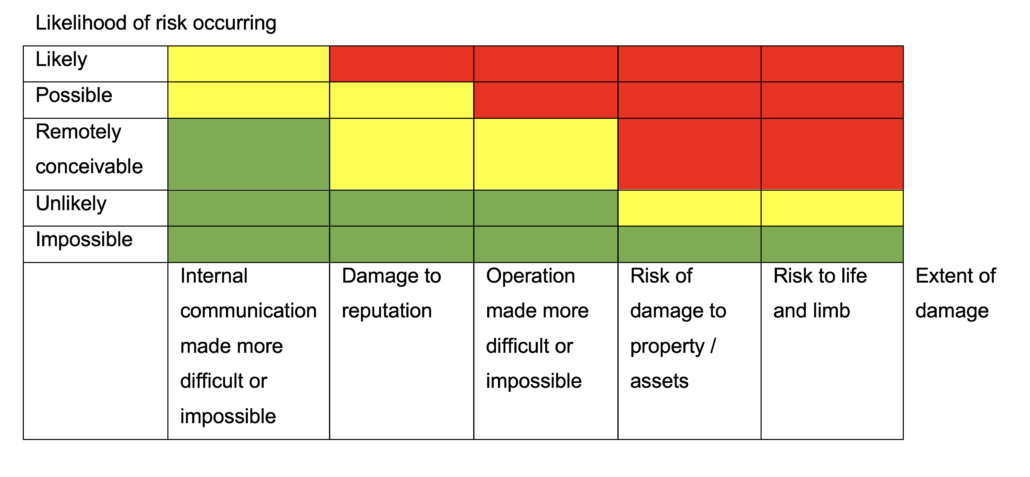Machine translation: Why you need to think twice
Machine translation (MT) has long since made its way into our lives. The chances are that you have used MT a fair few times in a personal context – typing canard laqué into your phone’s web browser to decipher a restaurant menu or clicking ‘See Translation’ to discover what all the fuss is about on LinkedIn or Facebook.
What about in a professional context, though? Perhaps you have turned to Google Translate – arguably the prototypical machine translation tool of today – to understand an email penned by colleagues from an overseas subsidiary or even a competitor’s website as part of your competitive analysis efforts? You wouldn’t be the only one. According to Google’s CEO Sundar Pichai, Google Translate was used to translate 20 billion webpages worldwide in April 2021 alone. A safe conclusion, therefore, is that machine translation enjoys a strong presence in our everyday lives. The question remains, however: What exactly is it?
What is machine translation?
Machine translation is the means of automatically transferring content from one language into another. Without delving too deep into the technical details, MT can be split into two key approaches: statistical machine translation (SMT) and neural machine translation (NMT).
SMT scans a collection of previous translations known as a corpus to draw conclusions. An SMT tool faced with, say, a technical installation guide would translate the German word ‘Mutter’ as ‘screw’, as opposed to the other potential translation ‘mother’. Its decision is driven by data and based on an equation of probability – the word ‘mother’ has never or rarely featured in past technical translations, so why should it now?

NMT, meanwhile, deploys a series of algorithms known as a neural network to complete the translation. At the heart of it, however, the process is the same – the technology has access to previous work and, on the basis of this data, predicts the likelihood of one possible translation being correct compared to another.
Has the time come to wave goodbye to human translators?
Impressed by the capabilities of modern-day technology, some now question whether human translators are still needed at all. In November 2018, German politician Lars Klingbeil publicly stated that technological advances would render translators superfluous in a couple of years. He is yet to be proven right. Here at AJT, we feel that our role as linguists can never be outright replaced by artificial intelligence. There are a number of reasons for this. We’ll focus here on three of them – risk, cost, and what can be summed up as ‘the human touch’.
Risk
When it comes to translation, one key difference between something as basic as hotel breakfast signage and something as technical as a hardware installation guide is their potential impact. You might be surprised to hear that both carry risk. Errors made in the translation of a hardware manual could, for instance, lead to a staff member incorrectly operating the equipment and therefore causing damage to the appliance, fellow workers, or themselves. Yet even a mistranslation of something as simple as ‘Contains nuts’ or ‘Hot water: Risk of scalding’ at a buffet counter can have serious ramifications.
The below graph offers a simple method of risk assessment for translations, analysing risk along the axes of probability and the type of damage that could be caused. The most severe type of risk, rather unsurprisingly, encompasses that to life and limb. But even intangible harm such as communication problems or damage to reputation are factored into the equation – and rightly so.

One example of damage to reputation occurred in 2020, when online retail giant Amazon launched its Swedish website using machine translation. The results caused quite the uproar, with offensive words featuring in product descriptions and a frying pan being listed as a product for women. These are the sorts of things humans as sentient beings can – and did – pick up on. A machine, in contrast, cannot judge what is offensive or politically incorrect. At most, it can recognise unacceptable words, but this is something you must first teach it, e.g. by creating a ‘blocklist’.
Mexico’s official tourism agency also experienced an embarrassing situation after MT technology mistranslated popular destination names, leaving English-speaking visitors to the website stumped and achieving the exact opposite of what a tourism website is supposed to.
Given that the main reason for purchasing translation services is to tap into new target markets, it’s easy to imagine the potential long-term impact of faulty or offensive translations. First impressions really do count. For this very reason and many others, our team puts their faith in professionally trained human translators.
If you, however, are mulling over machine translation, it’s important to weigh up the risks at play. You need to determine whether you feel comfortable entrusting a software program to rewrite your content in foreign tongues. Alongside this, you have to bear in mind that a machine – unlike a company or individual – cannot assume legal liability for any errors and their consequences. In general, it is fair to say that the higher the stakes, the less suitable machine translation is.
Cost
Putting the risks to one side for a moment, it can be tempting to assume that MT offers immense cost savings. After all, if fewer or no linguists are required, that’s a lot of staff wages and expenses saved, right?
Well, it’s not quite as simple as that. Computers can certainly achieve a great deal, but they can essentially only do what humans tell them to do. MT technology first requires input and training. Before it can set to work, you need to feed it reams of translations and their matching source texts. This complex data entry process is often guided by specialists in computational linguistics. Their job, in a nutshell, is to get computers to determine the meaning(s) of words so as to understand language in a similar fashion to humans. This could include, by way of coding, telling a machine how to tackle ambiguities, to avoid certain words because they are offensive, or to not translate company names such as ‘BlackRock’.
The costs involved here are not one-off expenses. The machine translation engine can never be fully trained, meaning it’s a never-ending process. Of course, there will be software patches required. More importantly, however, language is fluid. Over time, society changes its views on certain words and new vocabulary emerges. In fact, according to the Global Language Monitor, a new word is created every 98 minutes – that’s a whopping 5,400 new words each year that technology will need to get to grips with.
In brief, since expert human input will always be required somewhere along the line, cost savings might not be as impressive as first presumed. As with any business decision, it’s important to look at the bigger picture.
The human touch
This last factor is what we consider to be the not-so-secret ingredient to top-quality translations. Unlike a software program, human translators are able to judge when it’s preferable or even necessary to stray from the original text. Let me underpin this with a simple example: A while back, I was tasked with translating a conference menu into English for a global company based in Germany. One of the dishes on offer featured ‘sausage’. In my capacity as translator, I decided to add the word ‘pork’ in the English, despite it not being in the original German text. Why?

At an event that I had personally attended a few years prior, a fellow attendee from an Islamic country queried at the buffet counter whether the chorizo dish was halal. The server’s response was a tentative yes. Just before the attendee served herself a portion, I stepped in to explain that chorizo is made with pork and is therefore impossibly halal. What this anecdotal detour boils down to is this – while a German, Brit or American might instinctively think of pork when they read the word ‘sausage’, the same cannot be necessarily said of someone from a country such as Turkey, where sausage is typically made from beef or lamb. What is evident to you, someone else might be completely oblivious to.
When translating the conference menu, I knew the company in question had sites dotted across the globe, including in predominantly Islamic locations. It was very likely staff from destinations where eating pork goes against belief systems would also be in attendance. This background knowledge and gut feeling guided my work, and my addition of ‘pork’ ruled out any unnecessary confusion or potential faux pas during the event. A machine cannot do this – if ‘pork’ is not featured in the original text, then it will not have the autonomy to insert it. Doing so goes against the very rules it operates by.
If you therefore need cultural differences to be taken into account, your best bet is to entrust a professional human translator. A machine cannot independently adapt a text to cater for culturally different audiences. For instance, it is often the case that professionals in the U.S. tend to favour a more relaxed, sometimes bordering on chummy, tone. In the German world of business, it is common to keep things more formal.
Yet when I say “culturally different”, I am not solely referring to geographical location. Say, for example, your product is racking up impressive sales among Generation X in the UK, but market studies show your main purchaser group in Denmark would be Generation Z. In this case, it might be worth having two different styles and tones of voice between your Danish and English-speaking content. Once again, machine translation cannot do this for you. Technology alone is unable to incorporate the subjective likes or dislikes of one cultural human group over another. Such matters of taste defy logic. But that is humans for you, and it is humans who will ultimately purchase your goods or services. This is a key consideration – particularly if you want to retain your company’s distinct style of communication or, more generally, pursue a human-to-human (H2H) approach to marketing.
So where can I make use of machine translation?
There are areas where we at AJT do see machine translation as being a suitable option. Not every written text has to be an exquisite showcase of the author’s talent or innovative prowess. Sometimes, you just need to translate a text to get the gist of it. If all you require is a translation that is ‘fit for purpose’ and nothing more, then MT technology can offer you a solution. As suggested above, this could be the case for website content written by competitors to get an idea of their online marketing activities.
Similarly, where there is a great deal of repetition, MT can provide a means of speeding up the translation process. Say you regularly publish step-by-step guides where certain processes are repeated. The MT tool will see that you have translated a specific step in a certain way. If the same or a similarly described step later appears in the same or another manual, the tool will automatically fill in the gap with your previous translation. What this does not mean, however, is that you can cut out human involvement altogether. This is firstly because it will be a human who provides the initial translation in the first place. Secondly, you will still require a pair of human eyes to at the very least check for errors that might have crept in and to confirm that the phrase does indeed have the same meaning each time it appears.
One concrete example of where machine translation is a suitable solution is Patent Translate. This freely accessible service offered by the European Patent Office (EPO) allows users to access patent documents in 32 languages. By mid-2020, the technology had translated a total of 46 million full-text patents at the click of a button.
Whilst this is undeniably a huge success story, it is important to point out that the EPO had thousands upon thousands of existing human translations before launching Patent Translate. These then formed the starting point for the machine translations. To put it bluntly, MT technology cannot make something from nothing. What is more, the EPO itself has acknowledged that human translations are still necessary “where critical legal, commercial or related decisions must be made.” Indeed, its MT service is designed to offer an informative insight into patent documentation. It does not provide a legally checked translation. Nonetheless, Patent Translate does show that where the goal is for the reader to get a general idea of the content and where repetition is rife (EPO patent documents share a fixed structure), machine translation can get the job done.
All told, we at AJT are firm advocates of human translation and set great store by the advantages it offers to both our clients and their target audiences. By no means is this article intended to outright dismiss the potential of modern-day technology. Machine translation does have its place, but much like everything else, it also has its limits. Companies tempted by the promise of cost savings and shorter turnaround times therefore need to think twice before putting their money on the table.

